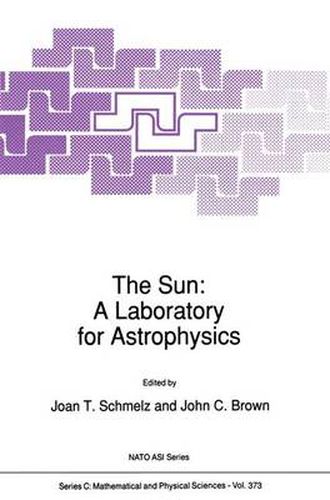Readings Newsletter
Become a Readings Member to make your shopping experience even easier.
Sign in or sign up for free!
You’re not far away from qualifying for FREE standard shipping within Australia
You’ve qualified for FREE standard shipping within Australia
The cart is loading…






This title is printed to order. This book may have been self-published. If so, we cannot guarantee the quality of the content. In the main most books will have gone through the editing process however some may not. We therefore suggest that you be aware of this before ordering this book. If in doubt check either the author or publisher’s details as we are unable to accept any returns unless they are faulty. Please contact us if you have any questions.
As in the days following Skylab, solar physics came to the end of an era when the So lar Maximum Mission re-entered the earth’s atmosphere in December 1989. The 1980s had been a pioneering decade not only in space- and ground-based studies of the solar atmosphere (Solar Maximum Mission, Hinotori, VLA, Big Bear, Nanc;ay, etc.) but also in solar-terrestrial relations (ISEE, AMPTE), and solar interior neutrino and helioseismol ogy studies. The pace of development in related areas of theory (nuclear, atomic, MHD, beam-plasma) has been equally impressive. All of these raised tantalizing further questions about the structure and dynamics of the Sun as the prototypical and best observed star. This Advanced Study Institute was timed at a pivotal point between that decade and the realisation of Yohkoh, Ulysses, SOHO, GRANAT, Coronas, and new ground-based optical facilities such as LEST and GONG, so as to teach and inspire the up and coming young solar researchers of the 1990s. The topics, lecturers, and students were all chosen with this goal in mind, and the result seems to have been highly successful by all reports.
$9.00 standard shipping within Australia
FREE standard shipping within Australia for orders over $100.00
Express & International shipping calculated at checkout
Stock availability can be subject to change without notice. We recommend calling the shop or contacting our online team to check availability of low stock items. Please see our Shopping Online page for more details.
This title is printed to order. This book may have been self-published. If so, we cannot guarantee the quality of the content. In the main most books will have gone through the editing process however some may not. We therefore suggest that you be aware of this before ordering this book. If in doubt check either the author or publisher’s details as we are unable to accept any returns unless they are faulty. Please contact us if you have any questions.
As in the days following Skylab, solar physics came to the end of an era when the So lar Maximum Mission re-entered the earth’s atmosphere in December 1989. The 1980s had been a pioneering decade not only in space- and ground-based studies of the solar atmosphere (Solar Maximum Mission, Hinotori, VLA, Big Bear, Nanc;ay, etc.) but also in solar-terrestrial relations (ISEE, AMPTE), and solar interior neutrino and helioseismol ogy studies. The pace of development in related areas of theory (nuclear, atomic, MHD, beam-plasma) has been equally impressive. All of these raised tantalizing further questions about the structure and dynamics of the Sun as the prototypical and best observed star. This Advanced Study Institute was timed at a pivotal point between that decade and the realisation of Yohkoh, Ulysses, SOHO, GRANAT, Coronas, and new ground-based optical facilities such as LEST and GONG, so as to teach and inspire the up and coming young solar researchers of the 1990s. The topics, lecturers, and students were all chosen with this goal in mind, and the result seems to have been highly successful by all reports.